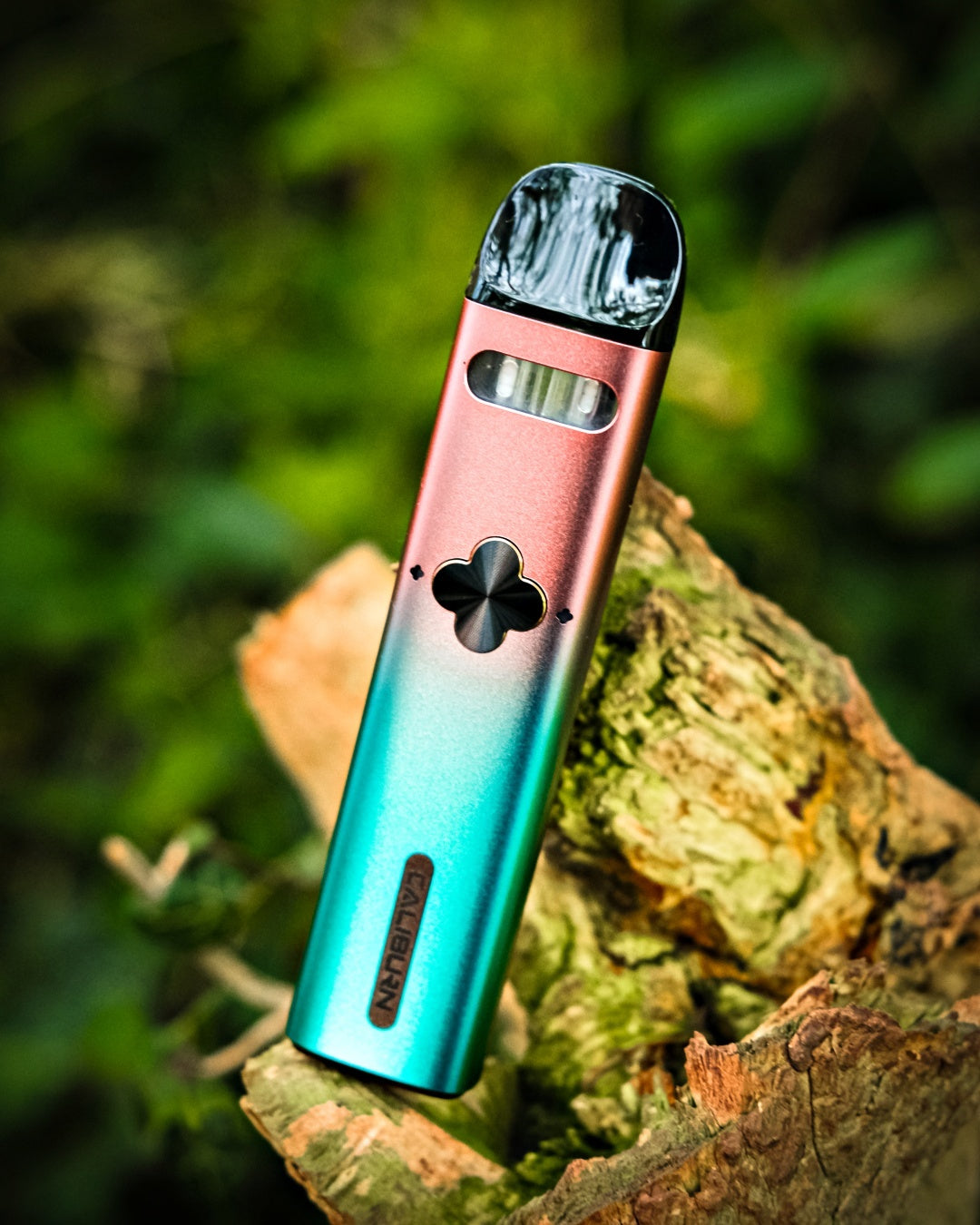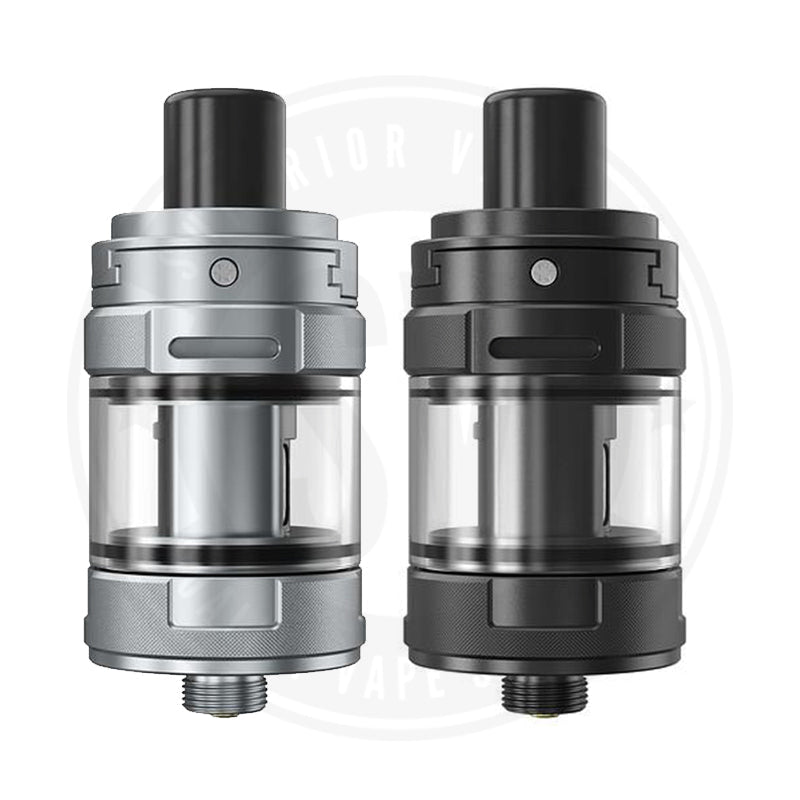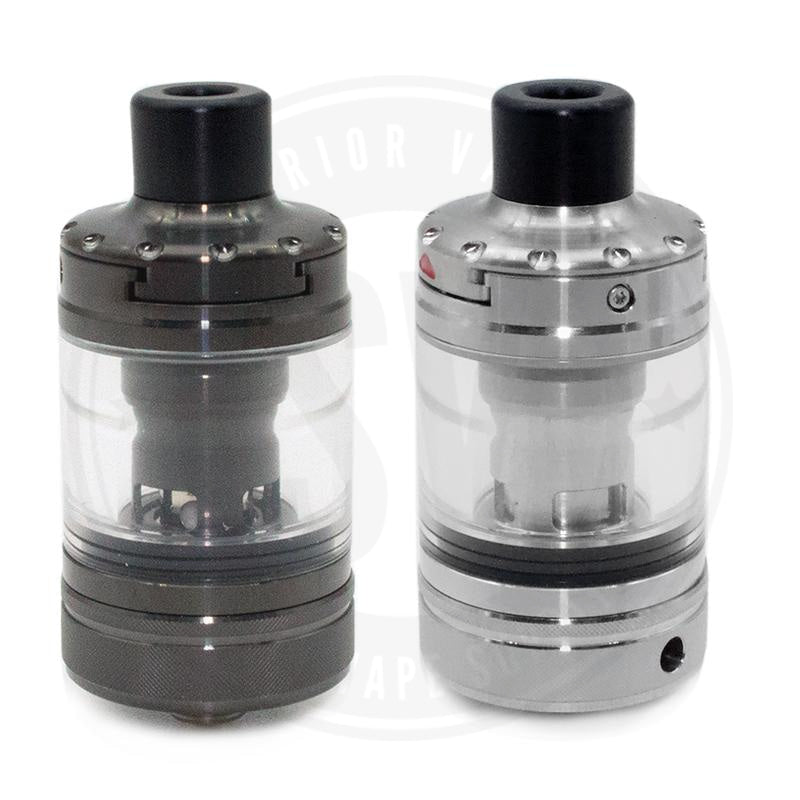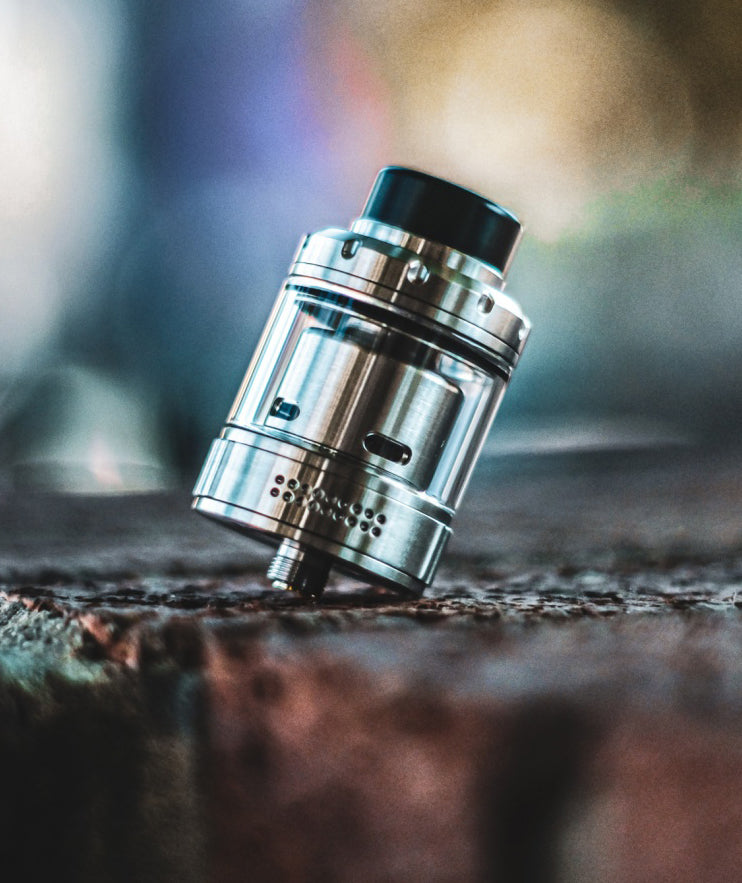Introduction
So you’ve decided to quit smoking! Maybe you’ve tried going cold turkey but it just didn’t work and now you want to know if vaping can help you kick the habit. Or perhaps you’ve been vaping disposable e-cigs and want to know more about how tank systems or mods work. Or perhaps you’ve been vaping for some time and are worried about some of the negative press you’ve been reading concerning long term health effects and want to understand a bit more about the actual science.
If this sounds like you, then your search for vaping knowledge and enlightenment has ended. Pull up a pew and take the load off your feet. Over the course of the next three chapters, we’re not only going get to the bottom of these questions, but we’ll give you the lowdown on a lot more besides.
We hope this guide will go someway to addressing some of the issues and concerns around vaping, whilst offering a practical resource for both new and seasoned vapers alike.
Welcome to the Superior Guide to Vaping.
1. What is Vaping?
A Short History of Vaping and E-Cigs
You might not realise it but electronic cigarettes have actually been around for quite some time. It was back in 1963 that their inventor, Herbert A Gilbert, first filed patented "a smokeless non-tobacco cigarette", which also included many of the ideas synonymous with modern vaping, such as flavoured cartridges and heating elements.
The patent was granted in 1965 but Gilbert’s invention was never taken up (these were the days when cigarettes were still widely advertised, hugely popular. Gilbert’s patent expired many years before the current boom in electronic cigarettes.
The modern e-cigarette can be attributed to a Chinese pharmacist named Hon Lik, who wanted to create an alternative to traditional cigarettes after his father died of lung cancer. Hi’s innovation was to use resistance heating to turn a pressurised jet of liquid into a smoke like vapour. The design was patented in 2003 and went on sale to the Chinese market in 2004. It was two Brits, Umer and Tariq Sheikh, who invented the first cartomizer in 2007, which gave rise to the popular e-cigarette design we see today
Why start Vaping?
The primary motivation for vaping for most people is to help them quit smoking traditional cigarettes. The obvious similarity between inhaling smoke from a cigarette and vapour from an e-cigarette is often cited by ex-smokers as providing the psychological crutch that allowed them to make the transition.
The adverse health effects of vaping have been a subject of intense controversy and debate (we’ll cover this in more detail later) but it’s safe to say that most rational medical opinion is of the consensus that inhaling vapour is far less damaging than inhaling smoke produced by burning tobacco. It is this fact alone that has seen millions turn to vaping in an attempt to quit smoking.
There are of course many other benefits vaping has over smoking such as being far cheaper and not leaving you and your clothes reeking of tobacco smoke.
As purveyors of the finest range of vaping equipment in the UK, it would be remiss of us not to mention the recreational and fun side to vaping here. Unlike tobacco, vapers can enjoy a cornucopia of e-liquid flavours and, for many, shopping around to discover the most interesting or delicious is a pretty enjoyable pastime in itself. There is also a strong online vaping community and the increasingly popular hobby of “modding” (more about this later).
Components of an E-Cigarette
There are various types of electronic cigarette out there, which we’ll discuss in a bit, but all of them are comprised of the same three essential components:
Atomizer
An atomizer heats up the e-liquid in the e-cigarette to produce a vapour that is then inhaled. The vapour is created because of the use of either propylene glycol or vegetable glycerin in the e-liquid.
Battery
Depending on the type of e-cig you’re vaping with, batteries can be one-use and built in or rechargeable and removable. The battery is responsible for powering the atomizer and can come in a range of sizes (measured in amps) and voltages. Some batteries even feature a variable voltage, meaning their power output can be adjusted.
E-Juice
E-juice is perhaps the most essential component of an e-cigarette as it’s what forms the inhalable vapour when heated by the atomiser. Also called e-liquid, it comes in a myriad of weird and wonderful flavours.
Depending on the type of e-cigarette used, vapers will either use a button to activate the heating of the e-liquid to a vapour or inhale directly on the e-cig which will activate the atomiser via a sensor.
Because vaping involves inhaling a vapour instead of smoke caused by combusting tobacco, it contains far less harmful chemicals and does not leave a lingering odour.
Types of E-Cigarette
There are various types of e-cigarettes but they all fall into one of three groups.
Disposable Electronic Cigarettes
Disposable e-cigs resemble traditional cigarettes in look and size and are a very popular option, especially for those new to vaping. The atomiser comes pre-filled with e-liquid and once used cannot be refilled. The batteries on disposable e-cigarettes tend to be fairly weak as well, delivering a far smaller nicotine hit. Whilst the initial outlay is considerably smaller, using disposable e-cigarettes can become very expensive compared to refillable systems over time.
Rechargeable Electronic Cigarettes
Like the disposable e-cigs the rechargeable versions resemble cigarettes but crucially the battery can be recharged and the cartridge containing the e-liquid and the atomizer can be replaced. These are a very cost efficient option for those new to vaping, but they are disadvantaged by the fact that different manufacturers use different threading where the cartridge screws into the battery. In a nutshell, this means that you are limited to using cartridges that have compatible threading. Some manufacturers even have their own proprietary threading meaning your cig-a-like will only be compatible with their brand of cartridges.
Tank System
Tank systems don’t look like regular cigarettes but are the most popular option amongst committed vapers. They come in many shapes and sizes but will always consist of a re-chargeable battery and a tank (sometimes called a clearomizer). The tank system also needs to be filled with e-liquid, but most starter kits will include a bottle of e-liquid to get you started. Although the initial outlay on a tank system is more than electronic cigarettes, they are by far the most versatile option out there, allowing you to choose from a huge range of e-liquid flavours and benefiting from a longer lasting and more powerful battery. Tanks systems can also be ‘upgraded’ with mods and can come in digital or mechanical format.
2. The Mechanics of Vaping
The Anatomy of Atomizers
The atomizer is a fundamental component found in every type of e-cigarette and refers to the heating element and the tank it’s situated in. The atomizer uses a coil which is powered by a battery to turn the e-liquid inside the tank to delicious inhalable vapour.
With disposable e-cigs and many electronic cigarettes the atomizer is built in but with tank systems you have a variety of options when it comes to atomizers. Let’s go through the basics now.
Clearomizers
Clearomizers (often abbreviated to ‘clearos’) are the most common type of atomiser and consist of a transparent plastic or glass tank with a wick for drawing the liquid from within the tank to a heating element called a coil that heats the liquid and turns it into vapour. Clearos are easy to clean out and refill with e-liquid making them the most versatile option for vapers looking to sample different flavours. Although more expensive glass clearomizers aren’t susceptible to damage from certain acidic flavours of e-juice, which plastic clearos are.
There are different types of clearomizer based on the position of the heating element or how many heating elements it contains. These are as follows:
Top Coil Clearomizers
Clearomizers with their coil positioned at the top, near to the atomiser head, create a warm vapour, which some people prefer. Because they are filled up from the top, they are also easier to refill. The downside to top coil clearomizers is that the wicks can often get dry meaning you have to keep rewetting the coil by swirling the tank around a bit.
Bottom Coil Clearomizers
Bottom coil clearomizers, as opposed to their top coil cousins, give a far cooler vapour which is far less likely to burn your throat. Since the wick is always in the e-liquid, they give a more consistent experience in terms of hits throughout. On the downside however they are harder to refill and can flood if you’re not careful.
Multiple Coil Clearomizers
Some clearomizers contain multiple coils which will give you more vapour and a stronger hit. Because the coils are spread out the vapour also tends to be cool. The main problem with multiple coil clearomizers is that they are power hungry and therefore battery life is reduced.
Cartomizers
Cartomizers (often abbreviated to ‘cartos’) are similar to clearos but use a different method of getting the e-liquid to the coil. They consist of a metal cylinder with a poly-fill material inside that soaks up the e-juice inside. For this reason they are inherently difficult to clean out and refill. For this reason they are less popular than clearos amongst vapers. The fact that it is notoriously difficult to clean them out means that some e-liquid residue may remain, making them better suited to vapers who stick with a specific flavour.
Dripping
Dripping is somewhat of a purists method to using an atomiser. Dripping involves pouring the e-liquid directly onto handmade ( pre-made ) coils made from a suitable wire material of a rebuildable deck, leaving nothing separating the liquid from the heating element. This method vastly improves flavour quality and cloud density.
Understanding Ohms
Ohms is a measure of electrical resistance, which means less volts to heat the coil in your atomiser. Choosing atomisers with low resistance therefore means a hotter coil, which means more vapour and a bigger throat hit. This is referred to as sub-Ohm vaping. Of course, if you opt to use variable voltage batteries electrical resistance is less of an issue as you can adjust the power output from the battery manually, negating the need for choosing a low resistance atomiser.
Batteries and Mods
When we think of portable electronic devices, we tend to think of the battery as just an afterthought. A necessity sure, but essentially just a means to an end. With vaping the type of battery used can have a massive impact on the experience itself. Finding the right kind of battery is one of the fundamentals of vaping and there is a lot to choose from.
Let’s explore some common topics and considerations when it comes to choosing a battery that works for you.
eGo Batteries
Let’s start by talking about the most common type of battery used by those new to vaping and that’s the eGo battery. Developed by Joyetech in 2009, the eGo battery has come to represent more of a style and is now produced by a large number of electronic cigarette manufacturers. eGo batteries are slightly wider than a cig-a-like battery and as such are less inconspicuous. Their main selling point is they feature ego and 510 threading, meaning they can be attached to pretty much any atomiser on the market.
Battery Life
Battery life is measured in amps (mAh). The lifespan of a battery will be directly related to its size, so as a rule, the larger the battery, the longer it will last. So whilst more cumbersome, larger batteries can last for days on end. Saying that it’s easier to carry a smaller battery so you could easily buy two just switch batteries if you find your e-cig pen running out of power.
Variable Voltage
Voltage is a measure of a batteries power output. The higher the voltage, the hotter the coil in your atomiser will get, making for a stronger throat hit when inhaling. Some batteries come with variable voltage however, enabling you to control how hot the e-liquid gets. Whilst this functionality can cause battery life to be reduced, it does allow you to control the type of throat hit you get.
Automatic vs Manual Draw
E-cigarette vapour is inhaled in one of two ways; through a manual button which activates the heating element, or through the act of inhalation which triggers a sensor that activates the heating element. There is a lot of debate over which is the best method. Advantages of automatic draw usually come down to the fact that they give an experience more akin to smoking, which many ex smokers are looking for when they take up vaping. The disadvantage is that with automatic batteries you’ll be stuck with using disposable cartomisers, which for some vapers can be a problem.
Mods and Modding
We could devote this entire guide to talking about mods. In a nutshell though, modding is the practice of using custom made parts or altering existing designs, either for aesthetic or experiential reasons. Mechanical mods tend to be for the more dedicated hobbyist as they don’t utilise any complex surgery, so all of the battery’s power goes into heating the atomiser. Digital mods also allow for variable voltage and wattage functionality.
All you need to know about E-Juice
Whilst finding an e-cigarette setup and build that works for you is fun and pretty satisfying, the real joy from vaping comes down to that final and arguably most crucial ingredient; e-juice. In this section I want to look at what e-liquid actually is and hopefully dispel some myths in the process.
Before we get into the chemistry though, let’s take a look at some of the many flavours available to vapers.
So many Flavours
There’s a reason that vapers are so enthusiastic about vaping. It’s the same reason that wine lovers love tasting new wines. There are quite literally thousands upon thousands of e-juice flavours out there to sample and each will appeal to different tastes and different people in different ways. From glacial mint to creamy meringue, tobacco to liquorice, the choice can be overwhelming. But finding your next favourite flavour is part of the fun. It’s worth pointing out here, that to enjoy the widest choice of flavours, it pays to opt for a clearomiser (preferably a glass one) over a cartomiser, as these can be easily refilled with whatever e-liquid your heart desires.
No Secret Ingredients here
Despite alarmist reporting to the contrary, e-juice does not contain a raft of secret and highly toxic chemicals and additives. In fact all e-liquids sold in the UK are legally obliged to list their ingredients on the bottle and you’ll find that the vast majority contain just three main ingredients which I’ve listed here.
Propylene Glycol / Vegetable Glycerin
Propylene glycol (PG) is an organic compound that is thin, colourless, has low viscosity and hygroscopic, which means it attracts and holds water molecules from the surrounding environment. PG is used in a variety of products such as asthma inhalers, and is in no way carcinogenic to humans. Unlike PG, Vegetable Glycerin has very high viscosity and is thicker. It is found in everyday products like soap, medications and is also used as a food sweetening agent. E-liquids will often contain either a mix of PG and VG or will be 100% PG or VG. We’ll go into why this is and how to choose the ratio that works for you in the next section.
Nicotine
Nicotine is an addictive substance that is the reason smokers become addicted to cigarettes in the first place. As such it is one of the key ingredients in e-liquid (although some e-liquids actually contain no nicotine at all!). Despite the fact that nicotine isn’t exactly good for you, inhaling nicotine in the form of a vapour is much better for you than smoking a normal cigarette (you can read more about why in the next chapter). E-juice bottles will tell you how much nicotine they contain: 0mg, 6mg, 12mg, 18mg, 24mg or 32mg. By reducing nicotine concentration over time, vapers can successfully wean themselves off the substance entirely.
PG / VG Ratio
If you’re new to vaping then the dizzying world of e-juice flavours can feel a bit like being in Charlie and the Chocolate Factory. But selecting an e-juice that suits you is about more than just your palette. Propylene Glycol and Vegetable Glycerin are the ingredients that allow the process of vaporisation to take place but for all their similarity they also have some different properties that will affect your vaping experience. Understanding what these are will help you find a PG / VG ratio that suits you.
Allergies to Propylene Glycol
A very small percentage of people are allergic or sensitive to propylene glycol. Side effects can include persistent sore throat and cough to swollen lips and gums in worst cases. If this is the case then you will need to look at using 100% VG e-juices. If you think you are experiencing symptoms related to vaping then we also recommend consulting with your GP to eliminate the possibility of it being related to something else.
Throat Hit
Many ex-smokers will miss the distinctive throat hit that smoking a regular cigarette gives them and will want to replicate it when vaping. This is all part of the psychological addiction to cigarettes so it’s worth noting that PG tends to give a much stronger throat hit than VG, which is far smoother. Many vapers will settle for a mixed ratio but if you’re looking for that familiar throat hit, then you need to go for a higher PG ratio e-juice.
Vapour
One of the undeniably satisfying things about vaping is the vapour itself. Exhaling huge fluffy clouds is pretty satisfying to many vapers. VG produces far more vapour when it is heated compared to PG. On the flip side however, VG tends to mask flavours more than PG. Finding the right balance between vapour production and flavour can mean experimenting with different PG/VG ratios.
3. Troubleshooting
Like all electronic devices, e-cigarettes and vape pens can develop faults or issues. The good news is that most of these are simple to diagnose and easily fixable. In this section we’re going to devote some time looking at some common problems and how to overcome them. We’ll end this chapter by taking a look at the issue of safety, specifically around the potential dangers of batteries and e-liquid.
Battery Issues
Batteries can be at the heart of a lot of problems with your e-cigarette. If your e-cigarette isn’t producing vapour then the first thing to do is check you’re not out of e-juice (it’s amazing how many people forget to do this). If you’ve got juice onboard then cleaning the battery terminal with a cotton bud is the next thing to do, before making sure your clearomiser is also clean.
You can also make sure the battery terminal hasn’t been pushed back into the battery and is failing to connect with the clearomiser. This is quite a common problem with eGo batteries and is easily rectified by using a pair or tweezers to pull the terminal back out. Sometimes eGo batteries won’t charge. This could just be because the battery has been inadvertently switched off (you can turn batteries on and off by rapidly pressing the power button five times) or there is e-liquid on the firing pin.
Another problem with batteries is that the light gets stuck and ends up staying on. This can usually be fixed by gently tapping the LED light on a wooden surface. If this fails try removing the battery and inhaling from the battery or blowing on it. If this fails then a last resort is to run the battery right down and then recharge. If none of this works, then you may have to bite the bullet and get yourself another battery.
Flooding
The tell tale signs of a flooded atomizer are low vapour production, a gurgling sound or even e-liquid in your mouth (an unpleasant experience). Flooded clearomizers are usually the result of filling it with too much e-liquid or taking too hard a drag. It’s also possible to screw the clearomizer on to the battery too tightly, causing a crack in the clearomiser. In this case you’re going to need a new clearomizer.
The best way to avoid a leaky clearomizer in the first place is to clean it regularly but if you do hear that dreaded gurgling sound then sometimes a few draws will sort the problem. Flicking your vape pen can also resolve the issue. If this isn’t working then you’ll need either leave the atomiser upside down somewhere to drain or try removing the battery and blowing through it onto a paper towel.
Clearomizers aren’t designed to last forever so if you find vapour volume decreasing or a funny burnt taste then it might just be time to buy another one.
Vaping Safe
Whilst vaping is a safe and far less harmful means of consuming nicotine than smoking, there are some safety issues to be aware of. As with all electronic devices, it’s important to be aware of the dangers of electricity, especially when it comes to batteries and voltage. The other potential hazard can come from the accidental ingestion or spillage of e-liquid. Let’s tackle each separately.
E-Liquid Safety
As we’ve already discussed, some e-liquids do contain nicotine. Whilst nicotine produced in e-liquid vapour is harmless at such low levels, it is potentially lethal to humans if ingested directly in liquid form. For this reason e-liquids should be kept well out of reach of children and pets and medical attention sought immediately if you suspect it’s been swallowed. If e-liquid is spilt directly on skin then make sure to wash it off straight away.
Battery Safety
Lithium batteries are found in a huge number of everyday appliances and, despite it being incredibly rare, all have the potential to explode. Fortunately most electronic cigarette lithium batteries have overcharge protection, meaning they can sense when they are receiving too much voltage when charging and will limit how much charge the battery receives. As well as this most modern batteries also come with a fusing system.
That being said even modern batteries aren’t entirely fool proof so it’s important to follow these simple steps to ensure battery safety:
- Always make sure your battery is UK ROHS tested and certified.
- Always check your battery comes with overcharge protection.
- Always use the charger that comes with the battery and never mix and match different batteries with different chargers.
- Never leave the house when charging your e-cigarette battery.
- Never allow your battery to overheat by leaving it in a potentially hot environment like a car.
Some vapers use mechanical mods, which are batteries that don’t have any digital interface or complex surgery, allowing for greater voltage and stronger flavour. These require a far greater understanding of concepts such as voltage and Ohms law and are recommended only to experienced hobbyists.




















